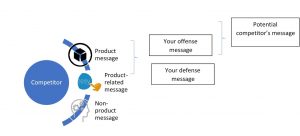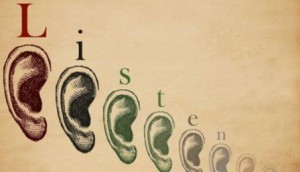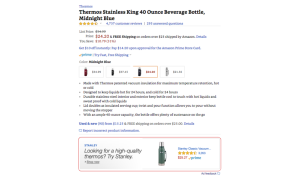We wrote a while back about 5 reasons marketers need to be aware of native advertising. Since then, native advertising has skyrocketed. A recent study from IHS Technology and Facebook’s Audience Network details how native advertising is the future of mobile marketing. (And since we know mobile is the future of marketing, marketers need to take note of native.)
If you’re a numbers person like me, the study has the data to back it up:
- By 2020, 63.2% of all mobile display ads will be native.
- Native will make up $ 53.4 billion in advertising revenue by 2020.
- Third-party in-app native will grow at an annual rate of 70.7%.
- The US leads the way in third-party in-app advertising (currently makes up 68.3% of global revenue).
So native advertising is growing, but that still begs the question, “Why?” Here are 5 reasons marketing is going native.
People Prefer Native Advertising
Why? Consumers are growing tired of having the website they browse cluttered with busy banner ads.
This is especially true with mobile marketing. Try using the same ad creative in a mobile banner as you do on desktop. It doesn’t easily translate. Consumers recognize this as well and often ignore these ads. In turn, attitudes toward native are shifting. People don’t get as tired of seeing native ads as they do traditional banner ads, which results in lower user churn – especially for publishers.
Native Advertising Drives Greater Engagement
Why? Native advertising seamlessly integrates into existing digital content.
Because of the way native advertising naturally flows with the existing content on a webpage or mobile app, it becomes more about storytelling. This appeals to consumers who desire a more personalized and tailored content experience. IHS found that consumers engage with native ads 20-60% more than standard banner ads.
Smartphones Enable Native Advertising
Why? It goes beyond the fact that the majority of US adults own a smartphone, and has to do with how we consume content on mobile.
Yes, comScore recently reported that nearly 80% of US adults who own a cell phone now own a smartphone (which is staggering!). But native advertising is about more than that. We consume information on smartphones and mobile apps in-feed, where consumers are constantly scrolling through articles and social media news feeds. Native advertising becomes precisely that: native to the mobile user experience – even more so than it does on desktop.
Mobile Apps Open the Door for Native Advertising
Why? The explosive growth in mobile apps gives native advertising even more room to grow.
Apple introduced their App Store in 2008, and since then there have been over 500 billion app downloads. As I mentioned above, native is perfectly suited for how consumers use mobile apps. Yet when 95% of mobile apps are free to download, how do marketers monetize them in an un-obtrusive way? Native advertising is one answer.
Native Advertising Is Generating Results
Why? As more marketers see the results from early adopters of native advertising, it’s proving to them that it’s a channel worth investing in.
A top reason why smartphone owners uninstall an app is because of obtrusive ad formats. Native is the opposite, and as a result drives higher retention rate: up to 3x higher than standard banner ads. eCPMs have also received a boost (up to 2x) as well as click-through rates. The next step for marketers will be to understand how people convert from native advertising. The goal of native lies somewhere between branding and enticing user action, so if it’s mobile landing pages users are being driven to ensure you can track both online and offline conversions.
Native Advertising Challenges Remain for Marketers
The IHS study also highlights a few key challenges marketers face when adopting native advertising:
- Lack of awareness of native ad formats. “For many, particularly smaller developers, there is still a lack of awareness of native advertising as a format, the benefits it can provide and how to implement native formats into their apps.”
- Restricted infrastructure and technology. “In some cases, particularly in Europe and the APAC region, there is still a deficit of infrastructure that can support the trading of native advertising at scale.”
- Limited Scale. “Even if mobile publishers are fully native ad-enabled, they may not be able to generate significant revenues from native, forcing them to divert to banners and interstitials to achieve scale in ad sales.”
- Sophistication of native ad formats. “The sophistication of native ads is still quite basic in many cases, which provides little incentive for advertisers and agencies to pay extra to buy native advertising.”
- No universal pricing and measurement. “There is no single currency for brand and performance-based advertisers to understand how their ads have performed, forcing advertisers and publishers to assess their ad spend on a campaign-by-campaign basis.”
As mobile marketing grows, it’s critical that marketers can properly attribute all of their advertising. Check out this infographic to learn more: The Mobile Marketing Blind Spot: What Is It Costing You?
Digital & Social Articles on Business 2 Community(54)







